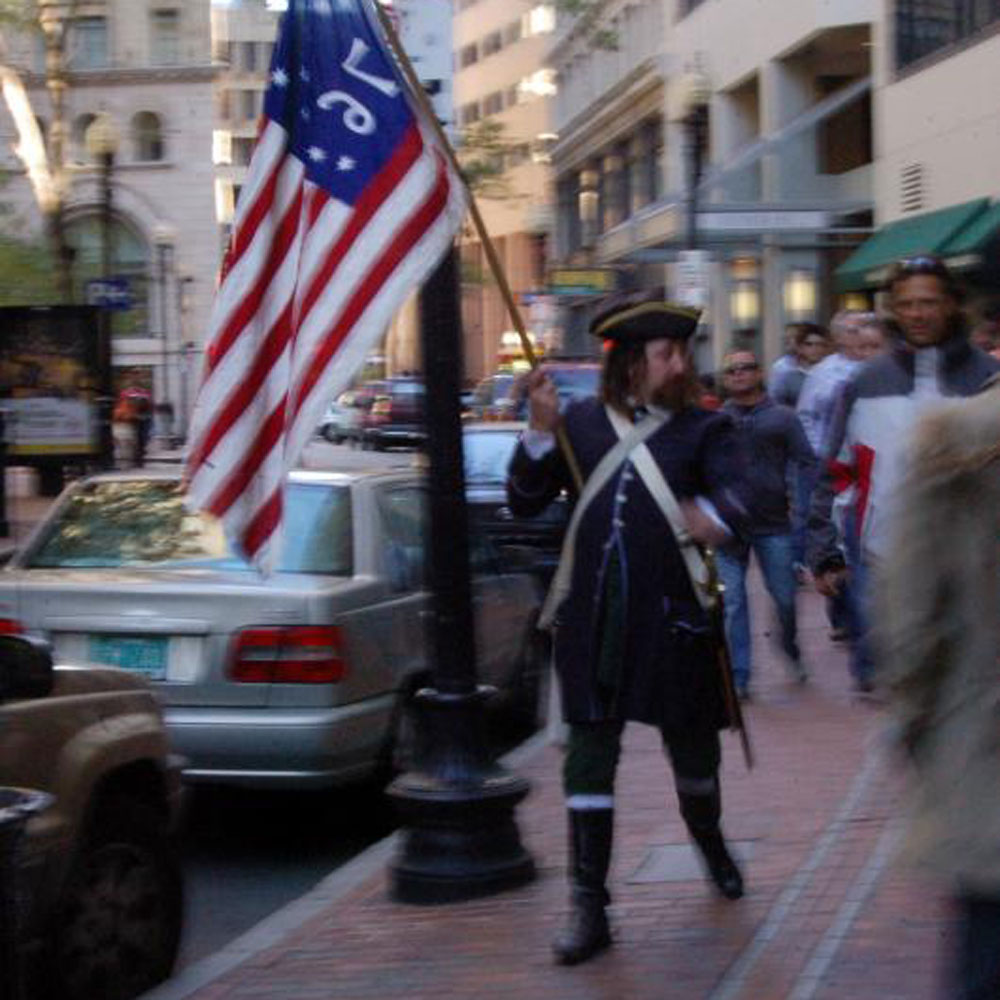
November 24, 2019; Boston Globe
In downtown Boston, it is hard to miss the city’s Freedom Trail tour guides. Clad in tricornered hats and other Colonial-era garb, the guides often regale visitors with tales of how colonial America broke free from an oppressive British empire. Every year, an estimated 22 million people walk all or part of the Freedom Trail, a circuitous path that traverses two-and-a-half miles to bring visitors past a dozen-and-a-half historic sites—starting at the historic Boston Common park and ending in Charlestown, with one Charlestown spur headed to Bunker Hill Monument and the other spur to the US Constitution, the nation’s oldest surviving US navy ship; built in 1797 and known as Old Ironsides, the ship remains seaworthy still.
But not all is well on the Freedom Trail. “Freedom Trail guides are feeling a little oppressed themselves these days,” report Katie Johnston and Maysoon Khan in the Boston Globe. The guides, Johnston and Kahn explain, “say they’ve wrecked their voices trying to make themselves heard over the roar of traffic and construction. They’ve suffered heat exhaustion after leading tours, some bedecked in wool, in blazing summer heat. They say they have worked while suffering from crippling back pain and food poisoning because they couldn’t find anyone to cover their shifts.”
The guides are employed by the nonprofit Freedom Trail Foundation, and they voted to unionize this past February. “Their main demands,” add Johnston and Khan, are “the ability to use microphones, to cancel tours during bad weather, and to call in sick without feeling they have to find their own replacements.” Meanwhile, the guides say that their base pay of $45 for a 90-minute public tour hasn’t gone up in 12 years.
Sign up for our free newsletters
Subscribe to NPQ's newsletters to have our top stories delivered directly to your inbox.
By signing up, you agree to our privacy policy and terms of use, and to receive messages from NPQ and our partners.
Johnston and Kahn explain that, “With the frigid New England winter approaching, improving their working conditions is an increasingly pressing matter. But as negotiations stretch into their ninth month, little progress has been made.” The tour guides, Johnston and Khan add, “are part of a wave of workers who have reached out to Unite Here Local 26 on their own in recent years.”
Work can be intense. Johnson and Kahn note that, “During peak times, there might be more than 14 tours a day, with groups ranging from as small as one or two people in the winter to 50 during the summer.” Many of the guides who work at the Freedom Trail have side jobs, but the Freedom Trail work is often their primary source of income.
“How are we going to be talking about the Boston Tea Party and people overthrowing this oppressive authority without doing it ourselves?” says Margaret Ann Brady, a 12-year guide who plays Mary Clapham, a widow who ran a boarding house near the Old State House.
Suzanne Taylor, executive director of the Freedom Trail Foundation, which employs the guides, says the foundation “continues to negotiate with our employees in good faith in order to reach an agreement.”—Steve Dubb













